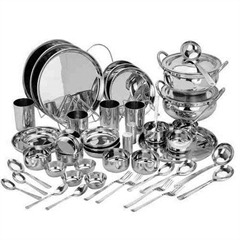1. Cultural Narratives: Ceramic bowls become storytellers, conveying the narratives of different cultures. Through patterns, motifs, and designs, they reflect historical events, myths, and everyday life unique to each culture. These visual stories provide a glimpse into the values, beliefs, and experiences of a particular society.
2. Symbolism: Ceramic bowls often carry symbolic significance deeply rooted in cultural contexts. Symbols representing fertility, protection, prosperity, and other cultural beliefs may adorn the bowls. These symbols can evoke emotions and resonate with individuals from the same cultural background.
3. Traditional Techniques: Many cultures have distinct pottery techniques that have been passed down for generations. From Japanese Raku firing to Native American coil pottery, these techniques contribute to the uniqueness of each culture’s ceramic bowls. These traditional methods keep cultural legacies alive.
4. Regional Aesthetics: The aesthetics of ceramic bowls are often influenced by the landscapes, flora, fauna, and climate of a region. Colors, patterns, and designs mimic the natural surroundings, resulting in bowls that are both functional and reflective of the environment in which they are created.
5. Ritual and Ceremony: Ceramic bowls play integral roles in rituals and ceremonies across cultures. They are used in offerings, religious ceremonies, weddings, and other significant life events. The act of sharing food or drink from a communal bowl fosters a sense of unity and connection.
6. Cultural Exchange: Throughout history, ceramic bowls have been traded and exchanged between cultures, leading to the melding of artistic techniques and influences. This cross-cultural exchange enriches the design and form of ceramic bowls, resulting in hybrids that celebrate diversity.
7. Contemporary Interpretations: Today, ceramic artists continue to draw inspiration from their cultural heritage while interpreting it through contemporary lenses. Modern ceramic bowls often combine traditional elements with innovative design, showcasing the evolution of culture within the art form.
8. Connection to Ancestry: Ceramic bowls can evoke a sense of connection to one’s ancestry and cultural roots. Using or displaying bowls that reflect one’s heritage can create a link to one’s past and foster a sense of identity and belonging.
9. Cultural Preservation: Incorporating cultural elements into ceramic bowls helps preserve traditional crafts and knowledge. As modernization advances, these crafts may be at risk of fading away. By infusing cultural elements, artisans contribute to the longevity of these traditions.
10. Universal Language: Despite cultural diversity, ceramic bowls speak a universal language of creativity and human connection. They remind us of the common threads that bind humanity together while celebrating the beauty of differences.
“A Touch of Culture: Ceramic Bowls” celebrates the intersection of art, culture, and craftsmanship. These bowls are more than mere objects; they are vessels of cultural heritage, storytelling, and artistic appreciation. Whether displayed as art, used in daily life, or handed down through generations, they carry the legacy of their cultural origins with elegance and pride.







